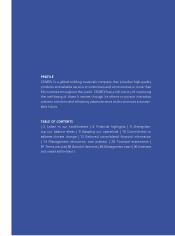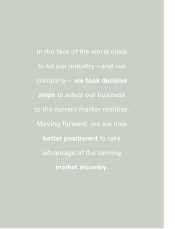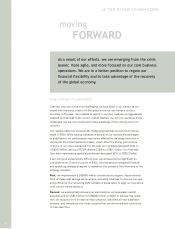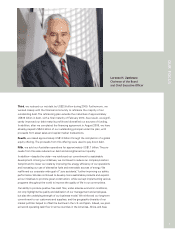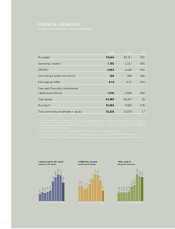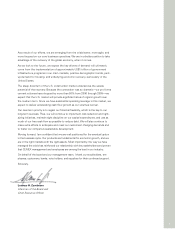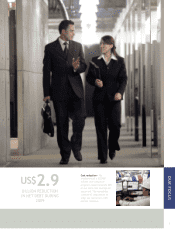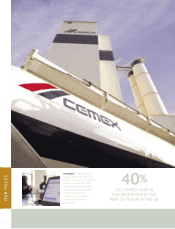Cemex 2009 Annual Report Download - page 11
Download and view the complete annual report
Please find page 11 of the 2009 Cemex annual report below. You can navigate through the pages in the report by either clicking on the pages listed below, or by using the keyword search tool below to find specific information within the annual report.
ADAPTING
our operations
MOVING FORWARD
We continue adapting our global operations network to
meet current market dynamics and to prepare for the
coming market recovery. During the year, we implement-
ed a number of initiatives to increase our productivity,
to improve our operating efficiency, and to exceed our
customers’ needs.
Among these initiatives, we right-sized our cement,
ready-mix concrete, and aggregates operations. To align
our capacity with local market demand, we selectively
suspended operations at numerous facilities across our
worldwide network. We also made significant corre-
sponding workforce reductions. All of these were painful,
but necessary decisions given the adverse business
environment.
We integrated our operations network across North,
Central, and South America and the Caribbean. To facili-
tate this process, we formed 11 task forces, comprised
of executives from across the region, to enhance the
exchange of best practices and the realization of syner-
gies. These task forces—which included not only our
cement, ready-mix concrete, and aggregates operations,
but also our commercial, logistics, human resources,
and communication and public affairs functions—were
assigned three main objectives: develop new demand for
our products, detect operating efficiencies, and define an
integrated business model. During the three-month inte-
gration process, we identified more than 600 initiatives,
with an additional annual benefit of more than US$80
million. More importantly, we strengthened our network
across the Americas.
To remain at the forefront of our industry, we launched
a new area to develop and foster a culture of innovation
across our company. The main goal of this global function
is to build on the considerable knowledge and experience
of all of our employees in order to define, support, and
execute innovative initiatives that will enable us to en-
hance our customer service, improve our productivity, and
better prepare us for future challenges. We have already
embarked on a number of initiatives, including the design
and development of new products and processes and the
maximum use of sustainable alternative fuels and raw ma-
terials. To expedite the creation, exchange, and utilization
of ideas, our employees are interacting on a new Web-
based platform called Shift. Ultimately, we anticipate that
this new function and platform will enable us to collabo-
rate and share knowledge more readily and will provide us
with a significant competitive advantage going forward.
We also lowered our energy consumption and provided
our customers with a wider array of blended cements by
continuing to increase our operations’ use of alternative
raw materials—including industrial byproducts such as slag
and fly ash—instead of clinker. Beyond the economic and
commercial attributes of blended cements, our growing
use of alternative cementitious materials lessens our envi-
ronmental impact by reducing our operations’ raw material
requirements. In Europe, to expand our capacity to pro-
duce blended cements, we opened a new cement grind-
ing and blending plant at the Port of Tilbury in the South-
east of England. The plant’s vertical cement mill—the first
of its kind in the UK—uses up to 40% less energy than a
conventional mill. Moreover, with its shipping, barge, and
rail loading facilities, the plant is ideally positioned to serve
the London and southeastern markets of England with the
most efficient, sustainable means of transport.
Taken together, these initiatives, among others, have
made CEMEX a leaner, more agile, and more efficient
company. As a result, we are well positioned to address
the challenges of the present market environment and
better prepared to capitalize on the benefits of the coming
market recovery.
9


